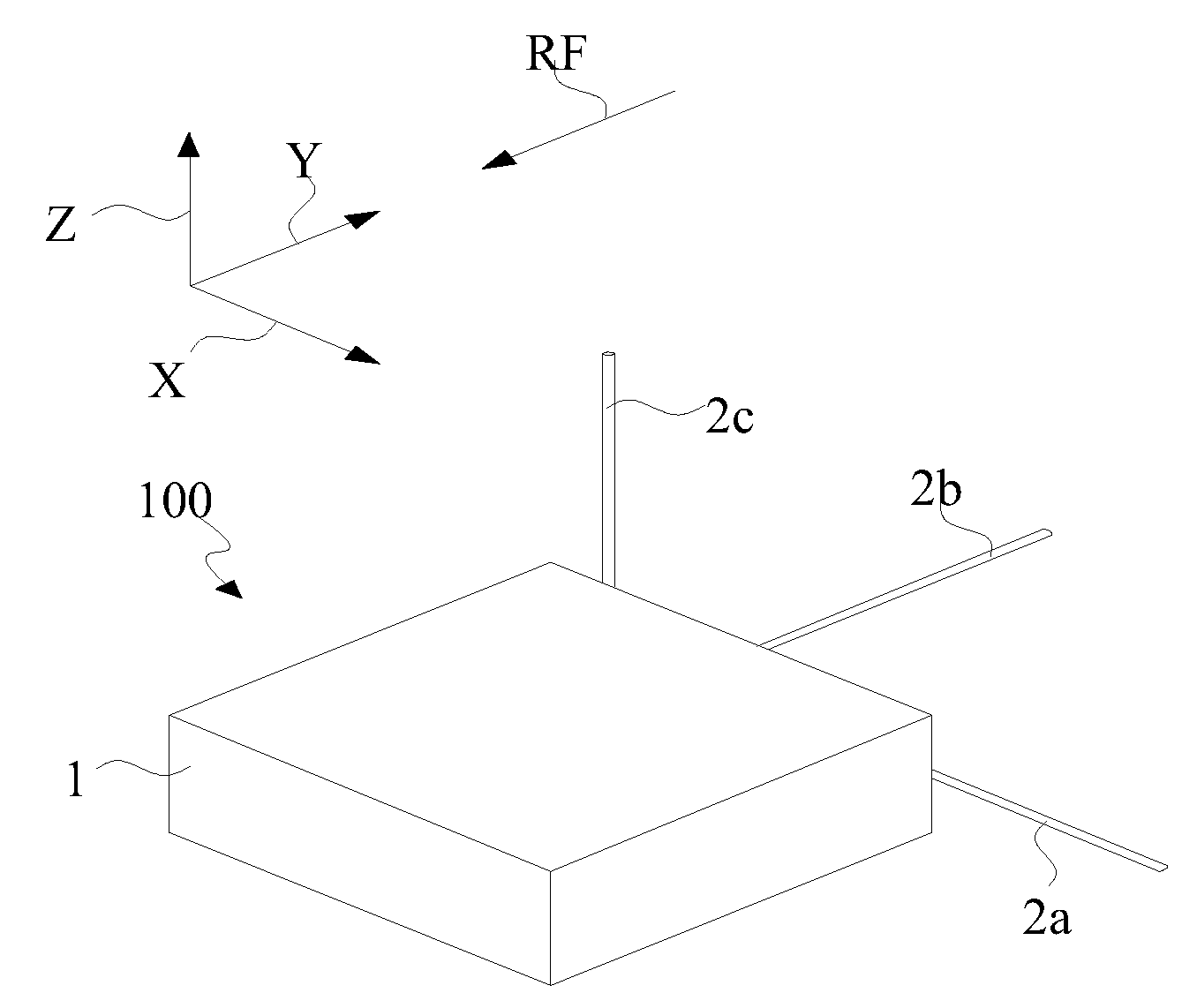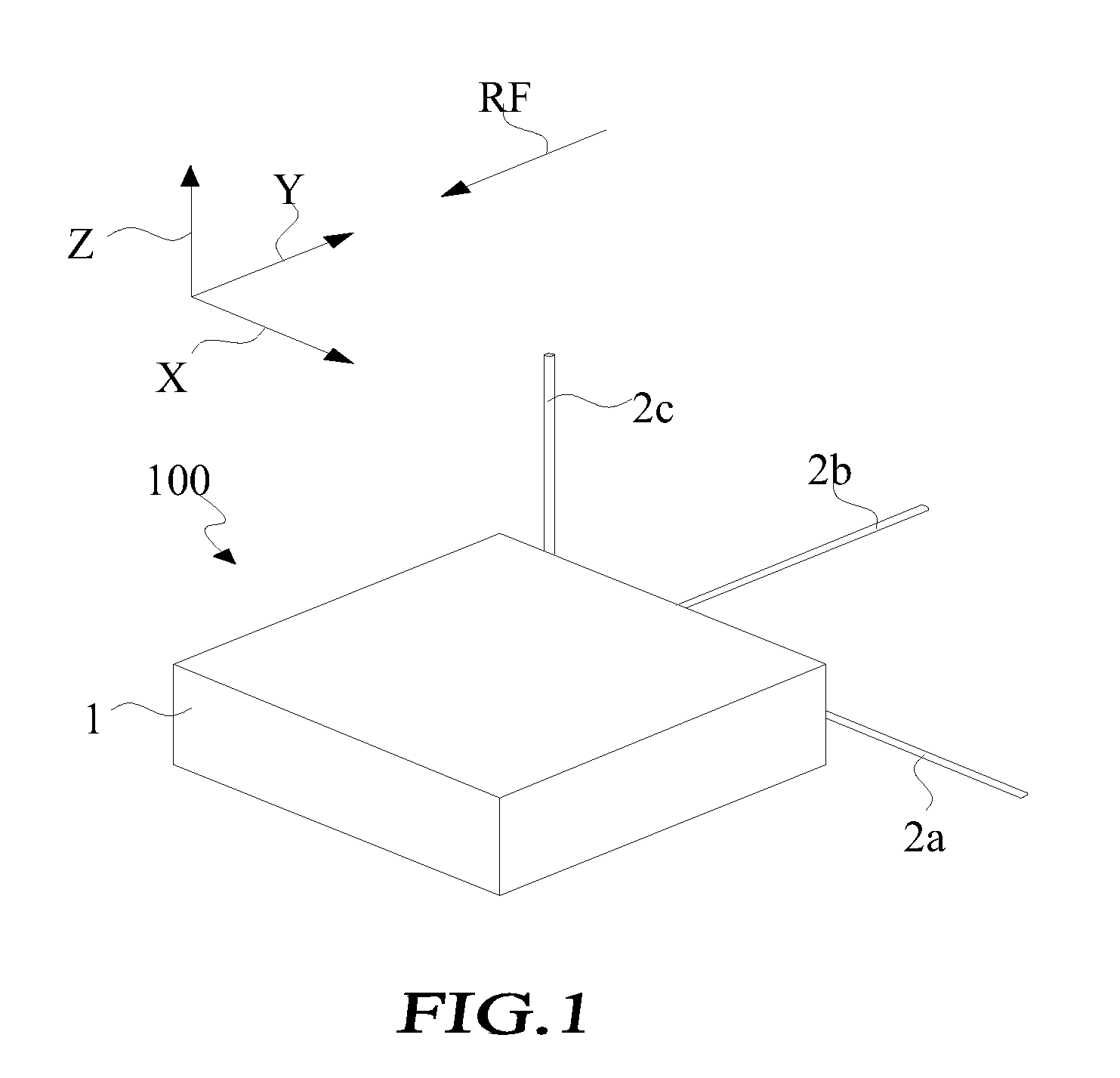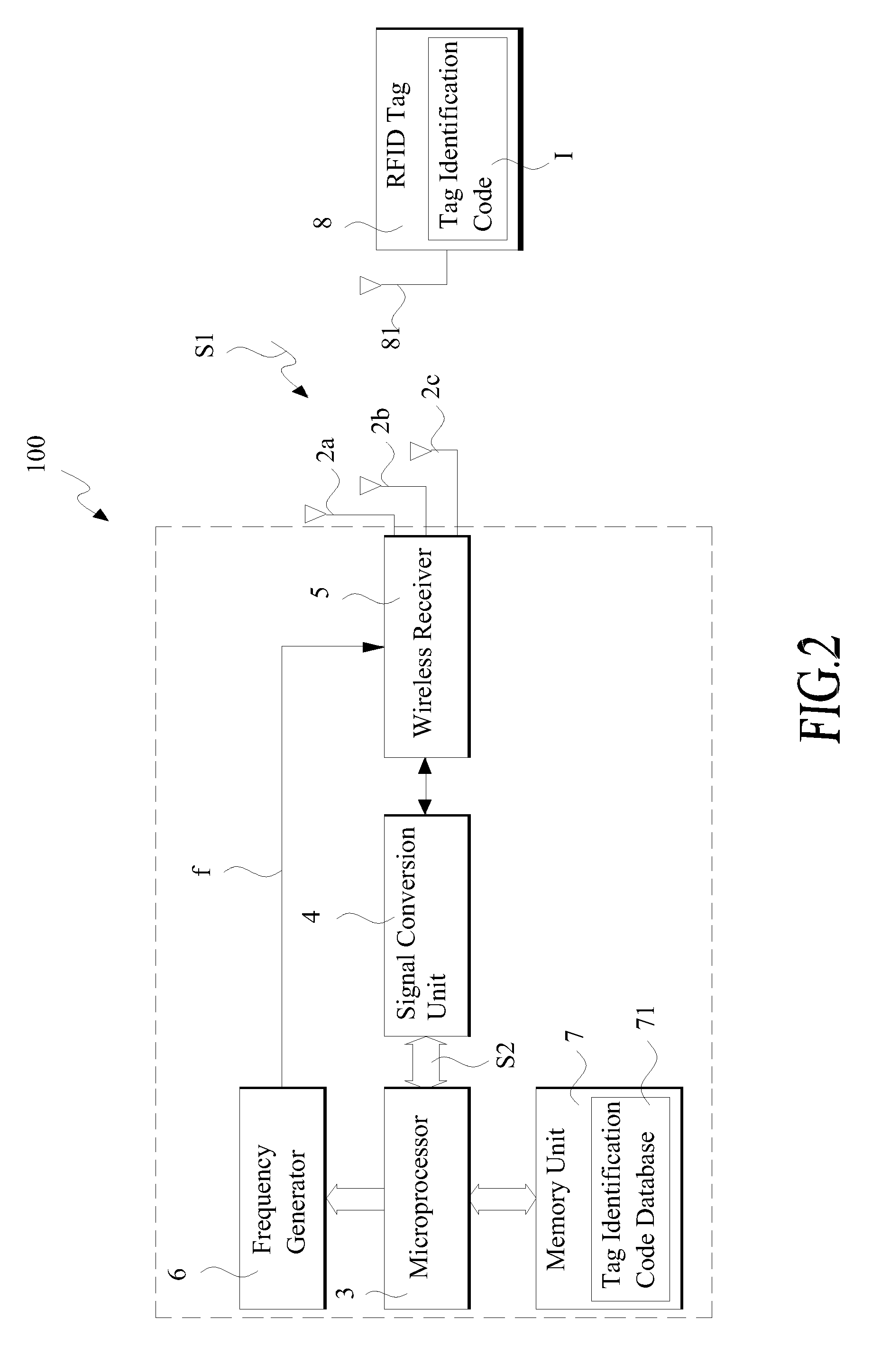Radio frequency identification reader having antennas in different directions
a radiation frequency identification and reader technology, applied in the direction of burglar alarm mechanical actuation, burglar alarm by hand-portable object removal, etc., can solve the problems of poor correlation between signal magnitude and distance, poor signal transmission spots, poor signal reception at sites where radiation electric field is present, etc., to achieve excellent signal reception performance, extend the range, and improve the effect of signal reception
- Summary
- Abstract
- Description
- Claims
- Application Information
AI Technical Summary
Benefits of technology
Problems solved by technology
Method used
Image
Examples
Embodiment Construction
[0018]With reference to the drawings and in particular to FIG. 1, which shows a perspective view of an RFID (Radio Frequency Identification) reader having antennas in different directions constructed in accordance with a first embodiment of the present invention, the RFID reader of the present invention, generally designated at 100, comprises a casing 1, a first signal antenna 2a, a second signal antenna 2b, and a third signal antenna 2c. The first signal antenna 2a, the second signal antenna 2b, and the third signal antenna 2c are arranged in mutually normal directions defined by X-, Y-, and Z-axis in a space and each of the antennas has a predetermined antenna field pattern operating with a carrier wave of a predetermined frequency f. Although the first signal antenna 2a, the second signal antenna 2b, and the third signal antenna 2c are arranged in the directions of X-, Y-, and Z-axis that are normal to each other in the first embodiment of the present invention, they can be arran...
PUM
 Login to View More
Login to View More Abstract
Description
Claims
Application Information
 Login to View More
Login to View More - R&D
- Intellectual Property
- Life Sciences
- Materials
- Tech Scout
- Unparalleled Data Quality
- Higher Quality Content
- 60% Fewer Hallucinations
Browse by: Latest US Patents, China's latest patents, Technical Efficacy Thesaurus, Application Domain, Technology Topic, Popular Technical Reports.
© 2025 PatSnap. All rights reserved.Legal|Privacy policy|Modern Slavery Act Transparency Statement|Sitemap|About US| Contact US: help@patsnap.com



